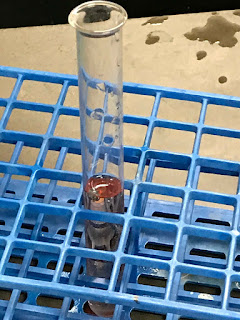I learned this happens depending on its number of valence electrons and orbitals. Sodium turns immediately because it only has to get rid of one valence electron, and it has a 3S orbital, rather than a 2S orbital like Lithium has. I assume the lower you go on the alkali metals, the faster the reaction will be. Elements like Lithium will be slower than Sodium, yet still faster than any electron with more than one valence electron. Calcium and Magnesium take longer to react because they have two valence electrons, and it's much harder to get rid of two electrons than one. For elements with two valence electrons, it must get rid of two electrons in the outermost shell, which is much harder than to get rid of one valence electron in the outermost shell. Aluminum takes the longest because it has the most valence electrons out of all the 5 elements. The more valence electrons the element has, the longer it takes to react. Aluminum has 3 valence electrons, more than any other element we tested. Also, magnesium and aluminum are on the same 3rd period, meaning that aluminum will take a similar amount of time to react as magnesium.
Here are some of the pictures we took. I tried to put them in order of before and after, but the pictures were too big and would not let me place them.
















No comments:
Post a Comment